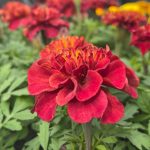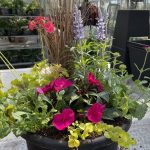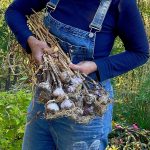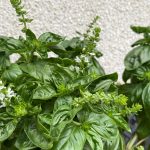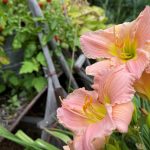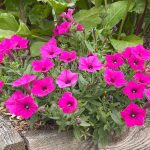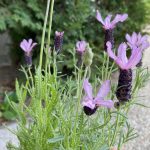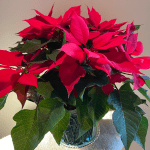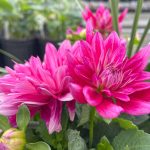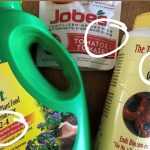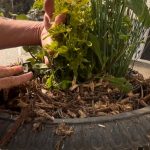Looking for a quick reference guide for TENDing your hanging baskets and containers? Click on the link at the bottom of this blog!
Hanging baskets and growing flowers and food in pots are a hot gardening trend that show no signs of slowing down. They are incredibly versatile and can thrive and adapt in any gardening space.
Once you have your containers in place, caring for them, or TENDing, them is the next step to keeping them healthy and happy for the duration.
Let’s take a look at the word TEND and use it as an acronym for caring for planted containers.
T – Take a Good Look
Good plant care starts with good assessment.
You know how you can look at something but not really see it? This step is about taking an intentional look at your plants.
Give your plants a quick check each day. Do they look like they did the day before? Are they looking weird? Are they in full bloom? Do you see any new buds coming? Each week, give them a deeper look.
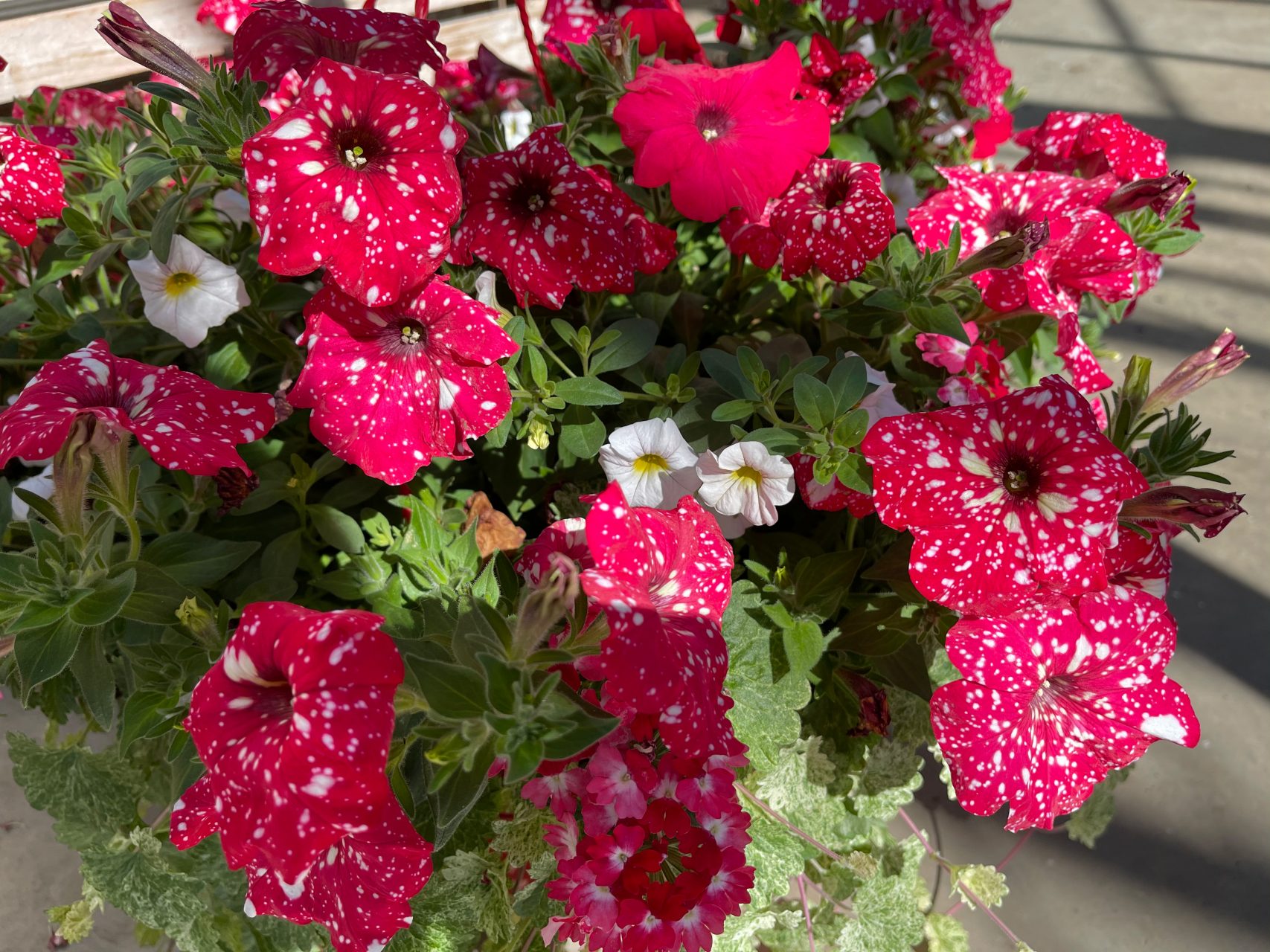
Here are things to look for when assessing your plants:
1. Leaf colour – should be a deep green unless it’s supposed to be chartreuse.
- Wilting?
- Dried?
- Spotted?
- Curled?
2. Invert them and look at the undersides – bugs like to hang out under the leaves
- Flower health
- Even colour?
- Fading colour?
- Drying?
E – Ensure There’s Enough Moisture
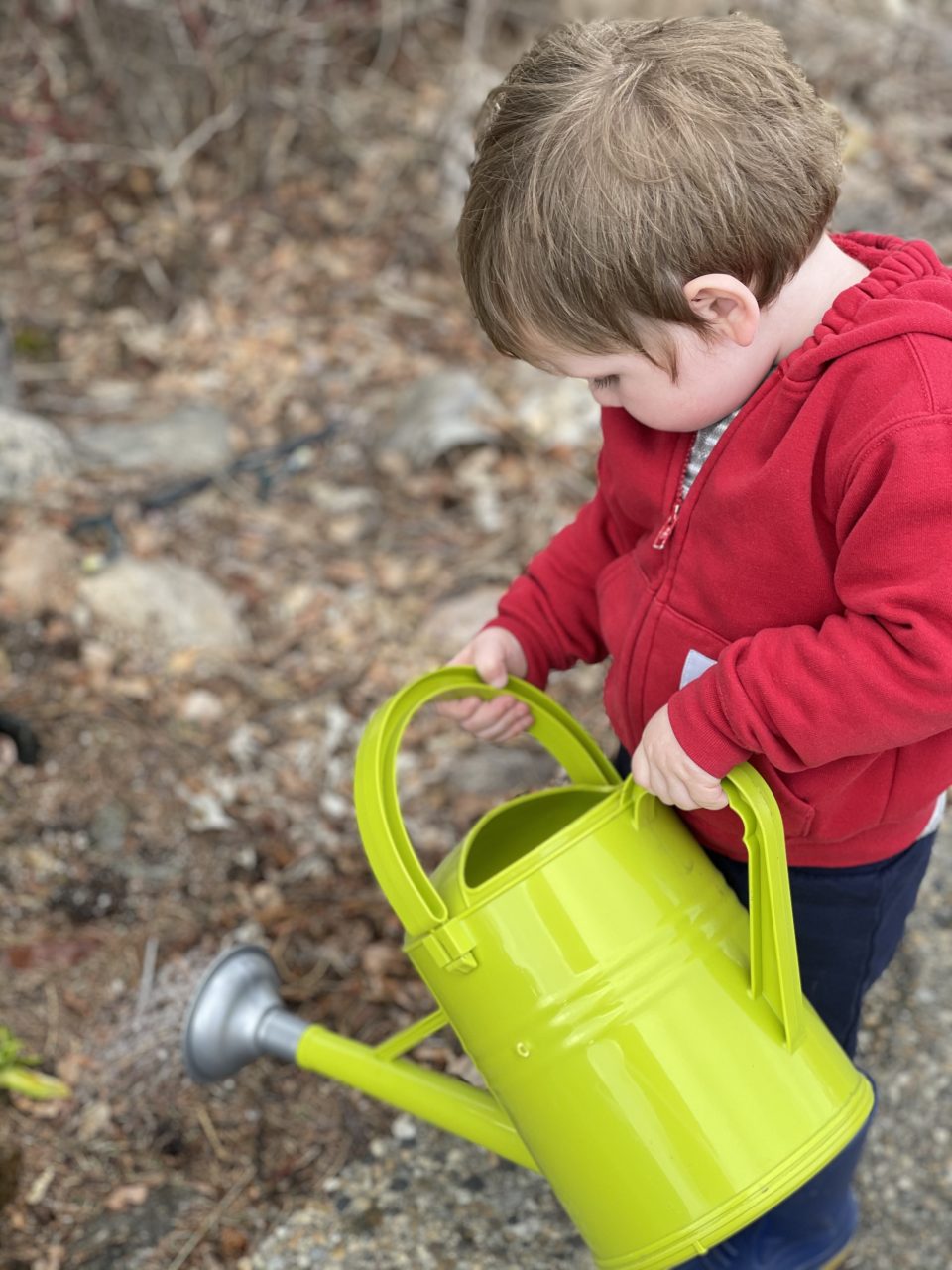
A well hydrated plant is a lot like a well hydrated human — all systems work better and metabolism can function at its peak.
This step is about watering. Check hanging baskets and planted containers daily for hydration.
Water stress makes it difficult for plants to perform at their peak and it lowers their ability to fight off other stressors like bugs or diseases.
Learn to read your plants when they are asking for water.
With some plants, needing water looks like ‘flagging leaves’ — this is a droopy look where the leaves first start to lose their structure at the tips and edges and gradually become the whole leaf, like a limp flag.
Consider flagging something that needs a response soon.
Other plants, like geraniums, have very strong leaves and they rarely wilt. Geranium leaves typically lose their deep green sheen and start to look pale.
With plants that have this kind of robust leaf structure, it’s best to get your finger into the soil and see how moist the soil really is.
You never want a plant to go start extreme wilting where the leaves have lost most of their turgor as this kind of stress is incredibly unhealthy for plants.
How to Assess Moisture Levels in Hanging Baskets
Checking the weight of a hanging basket is a quick and easy way to evaluate the moisture level. After you have watered a few times, you’ll get familiar with how heavy a hanging basket weighs when it is full of water and when they need to be watered.
You can check the weight of a hanging basket a couple of ways:
- Lift the bottom of the pot
- If they aren’t hanging, lift them by the hook
How to Assess the Moisture Level of a Planted Upright Container
Checking soil hydration of upright containers and planters depends on the size of the pot.
For smaller containers, check the weight like you would a hanging basket, either by lifting it or tipping it.
For larger pots and planters, insert the entire length of your index finger into the soil, and if it is dry at the knuckle closest to the end of your finger, it is time to give it a drink of water.
How to Thoroughly Water Hanging Baskets
Most hanging baskets measure 10″, 12″ and 14″ across. For these sized baskets, water them until the water just begins to drip out of the bottom of the pot.
By the time the water begins to drip out, most of the air pockets in the soil surrounding the roots have been saturated.
How to Fully Water Planted Containers
How planted containers are watered depends on the size of the container or planter.
Water smaller upright containers that measure up to 14″ across until water begins to drip out of the bottom of the pot.
For large planted containers 16″ across or more, you could end up overwatering the soil if you water until you see dripping out of the bottom. Give these containers a good drink of water and assess how the plants respond and how long the plants stay hydrated.
Related: Mulch added to the top of the soil in planters and hanging baskets can help to reduce soil moisture loss. See How to Use Mulch in Planters and Hanging Baskets for all the details of this useful hack.
N – Nutritional Needs are Met

A well nourished plant is a healthy plant.
Plants that have their nutritional needs met are stronger and grow more vigorously.
One of the challenges with both hanging baskets and containers is that they have a finite amount of soil and there is a lot of metabolism resting on each container of soil.
Nutrients are lost as water drips out, and we talked about the necessity of dripping water in the previous step, and because of this, hanging baskets and containers require weekly supplemental fertilizer.
Water soluble fertilizers with even numbers like 20-20-20; or ones with a higher middle number (Phosphorous) like 15-30-15 work well.
There are other natural and organic fertilizers, like Nature’s Source, available at greenhouses and garden centers that work well too.
Related: For an even more detailed discussion on fertilizer, see my blog called How to Understand Fertilizer Labels.
D – Deadhead & Encourage Growth
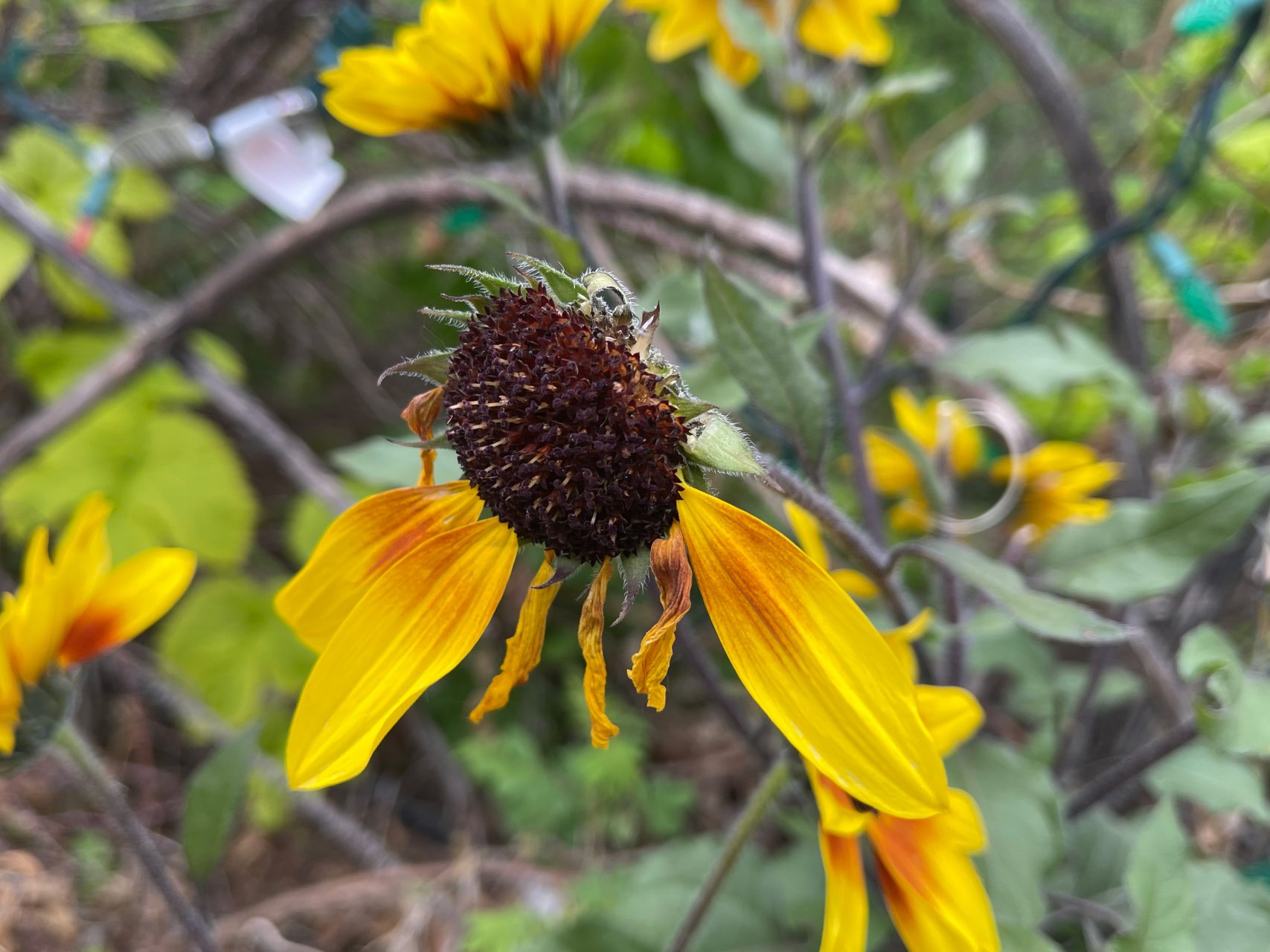
Deadheading is a maintenance step. Deadheading is a term referring to removing old flowers, otherwise known as ‘deadheads’.
Deadheading encourages more flowering because the business of plants is reproduction, and that is by producing seeds, so it will continue to make more flowers.
Other things to do to encourage growth in hanging basket and containers:
- Remove dead, yellowed, curling leaves – tired leaves take energy from the plant in attempts to repair those leaves — if they are removed, then the plant can send its energy to growth and blooming.
- Pinch back straggly growth – literally give the plants a haircut — you can use scissors if you wish, or just pinch them with your fingers – this will stimulate the plant to branch, and keep the plant stocky and bushy.
How Do Your Hanging Baskets and Containers Grow?
A quick daily check-in with your hanging baskets and planted containers — using the word TEND — goes miles in keeping them alive, thriving, and blooming. Let me know how they are doing and how you are doing!
©Sharon Wallish Murphy, ©Gardening with Sharon



